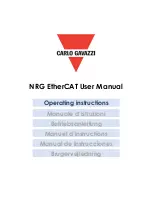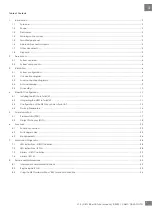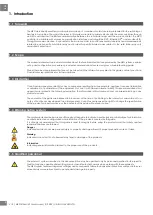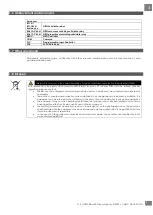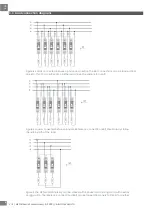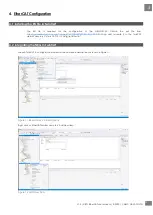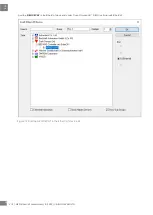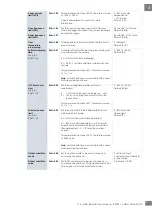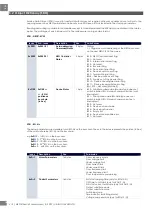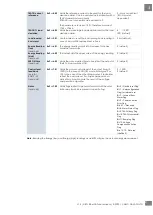
6
NRG User Manual | © 2020 | CARLO GAVAZZI LTD.
V1.0 | NRG EtherCAT User Manual | © 2022 | CARLO GAVAZZI LTD.
EN
3.
Installation
Installation general requirements
Avoid installing the device in environments with the following characteristics:
•
relative humidity higher than 95% or with condensation;
•
strong vibrations or shocks;
•
exposure to water sprays;
•
exposure to aggressive and polluting atmospheres (e.g.: sulphur and ammonia fumes, saline mist, smoke)
to avoid corrosion and/or oxidation
•
strong magnetic and/or radio frequency interference (thus avoid installation near transmitting antennae)
•
exposure of the devices to direct sunlight and the elements in general.
3.1
System configuration
The NRG bus chain consists of 1 NRG controller and up to 32 NRG solid state relays. The NRG controller is the interface
to the main controller via the 2xRJ45 shielded communication ports. The connection between the NRG controller and
the solid state relays is through the internal bus cables. Each RG..N is equipped with 2x micro USB ports to allow looping
between one RG..N and another using the RGCGN-xx-2 bus cables from Carlo Gavazzi. The RGN-TERMRES supplied
with each NRG controller has to be connected to the last RG..N on the NRG bus chain.
The NRG controller has to be supplied with a 24VDC via the supply input plug (Us-, Us+). Power to the RG..Ns on the
bus chain is provided via the internal bus cables through the NRG controller.
The RG..Ns require a mains reference connection with respect to the load (neutral or another phase) through the
‘Ref’ connector to provide voltage and power measurements. The Ref connector has 2x internally shorted terminals
to allow for looping of the mains reference onto various RG..Ns. Refer to ‘Load connection diagrams’ section for more
information.
Figure 2 NRG bus chain configuration

